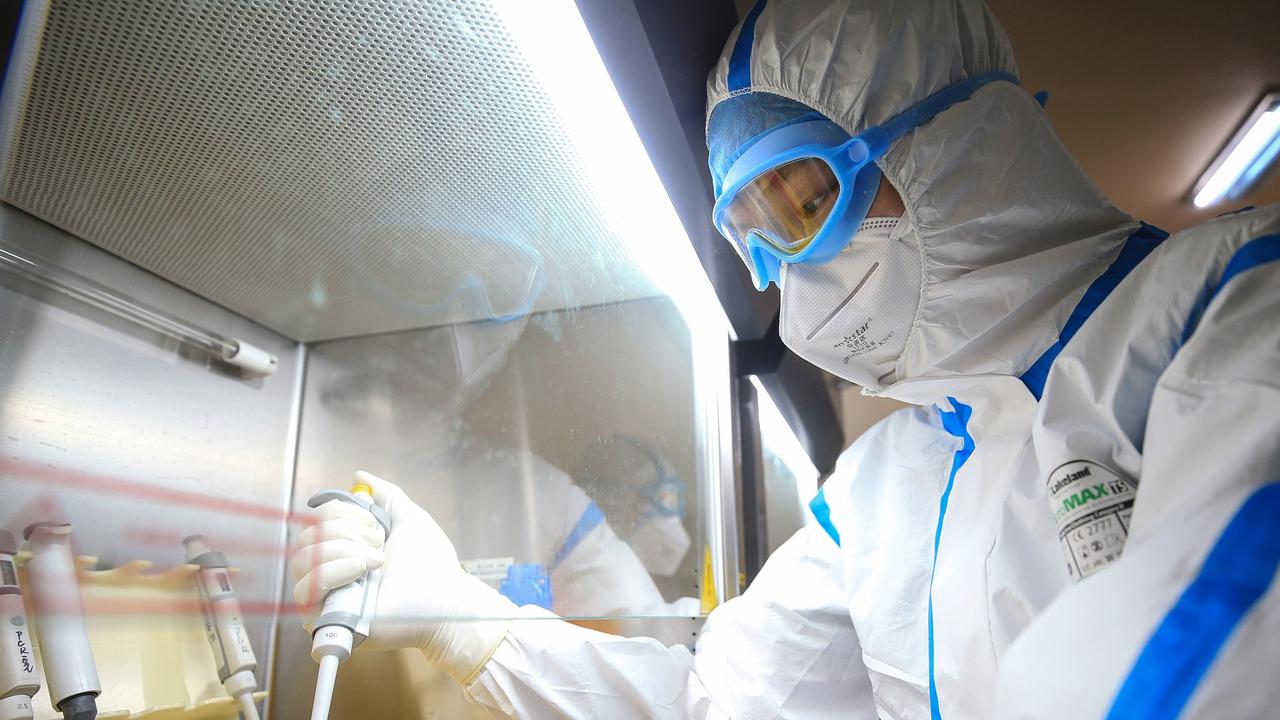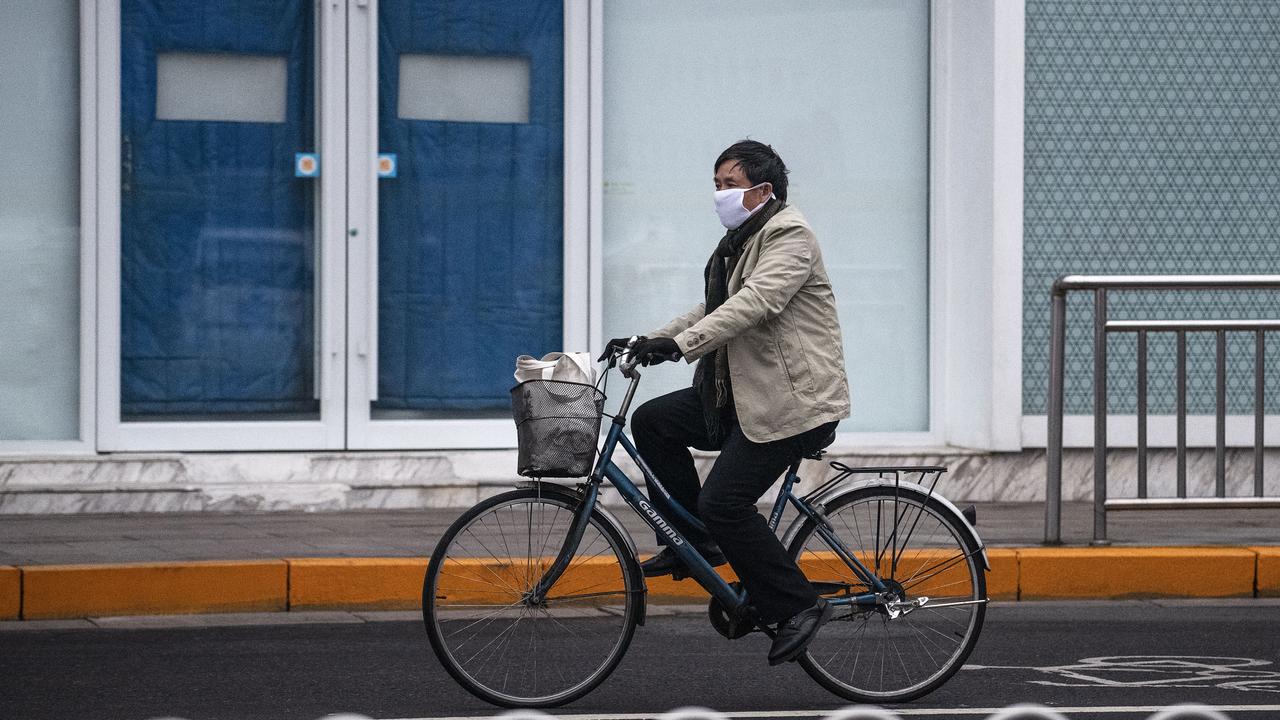Traces of coronavirus found in patients who have recovered
The number of new coronavirus cases may be dropping, but there has been a grim discovery in patients previously believed to have recovered.

The number of new coronavirus cases may be dropping in China, but a health expert has made a grim discovery about some patients who have recovered.
“We should not be relaxed. The figure may go up again,” Zhao Jianping, who is leading an expert team working to contain the outbreak in Hubei.
He said there were cases where recovered patients showed traces of the virus through nucleic acide tests.
There were also results in Canada where swabs taken from two people who had recovered revealed they still had traces of the virus.
“This is dangerous. Where do you put these patients? You can’t send them home because they might infect others, but you can’t put them in hospital as resources are stretched,” he said.
The death toll in China from the coronavirus epidemic rose to 2236 on Friday after 118 more people died, most of them in the hard-hit epicentre province of Hubei, the government said.
The National Health Commission also said in its daily update that China had confirmed 889 new cases.
The number is up from the previous day when it reported the lowest number of new infections in nearly a month, which fuelled hopes that the epidemic is nearing its peak.
More than 75,000 coronavirus infections have now been reported in China, and hundreds more overseas in more than 25 countries.
The vast majority of the deaths and overall cases in China remain in Hubei and particularly the provincial capital of Wuhan, where the virus first emerged in December.
REASON FOR DROP IN NUMBERS ON THURSDAY
A major drop has been announced in the infection rate of coronavirus by Chinese health authorities, but it’s not what it seems to be.
China’s National Health Commission announced 394 new cases on Thursday, marking a significant drop from Wednesday’s total of 1749.
But the country has changed its method for counting cases, saying only confirmed laboratory tests will be included, fuelling doubts about the true trajectory of the epidemic.
RELATED: Virus statistic that doesn’t make sense
RELATED: ‘Every pore opens up’: Virus victim speaks
Previously, Chinese authorities included “clinically diagnosed” cases from Hubei province in the national tally – a method which saw a surge of over 14,000 new recorded infections, mostly inside the province.
The gradual decline in the number of new infections has raised hopes that the situation will begin to stabilise in the mainland.
“The downward trend will not be reversed,” said Ding Xiangyang, deputy chief secretary of the State Council and a member of the central government’s supervision group.
Whatever promises were aired where the illness poses its biggest threat, countries around the world continued to grapple with the rippling effects.
The latest front in the widening global fight against COVID-19 emerged in Daegu, South Korea, where the city’s 2.5 million residents were urged to stay inside, wearing masks even indoors to stem further infection.
“Everything that is not known about this is causing concern,” said Dr David Heymann, professor of infectious disease epidemiology at the London School of Hygiene and Tropical Medicine.

China now says there are 29 confirmed coronavirus cases involving foreign citizens, including 10 in Hubei, the epicentre of the outbreak.
Among the 29 cases, two have died, 18 were discharged and nine remain in isolation receiving treatment.
In a press conference yesterday, Lian Weiliang, an official from the State Council and National Development and Reform Commission, said relevant embassies had been informed about infected foreign citizens.
RELATED: Australia’s ban on travellers from China extended
RELATED: Qantas flight cuts ‘disappointing’
Though all but about 1000 of more than 75,000 reported cases of the virus have been recorded in China, scattered cases have erupted elsewhere.
Iran announced three more infections on Thursday, a day after the country’s state-run news agency reported its first two deaths stemming from the virus.
In addition, South Korea reported its first fatality and Japan said two former passengers of the Diamond Princess cruise ship had died of the illness, bringing the death toll there to three.
Other deaths confirmed by the World Health Organisation outside mainland China include two in Hong Kong and one each in France, the Philippines and Taiwan.
The trajectory of the outbreak remained clouded by China’s zigzagging daily reports of new cases and shifting ways of tallying them.

Last week, China’s National Health Commission said officials in Hubei would record new infections without waiting for laboratory test results, relying instead on doctors’ diagnoses and lung imaging. On Thursday, though, it returned to its prior way of counting, a decision sure to aggravate observers who say consistency is key to understanding the path of the virus.
The health commission said it was reducing its count of infections by 279 after lab tests found they had wrongly been included in the tally.
Cities in Hubei with a combined population of more than 60 million have been under lockdown since the Lunar New Year holiday.
Authorities halted nearly all transportation and movement except for quarantine efforts, medical care, and delivery of food and basic necessities. “Wartime” measures were implemented in some places, with residents prevented from even leaving their apartments.
The stringent moves have followed public fury over Hubei authorities’ handling of the outbreak at its outset.
The risk of human-to-human transmission was played down and doctors who tried to warn the public were reprimanded by police. Wuhan residents reported overcrowding in hospitals and futile attempts to seek treatment.
Many countries have also set up border screenings and airlines have cancelled flights to and from China to prevent further spread of the disease, which has been detected in about two dozen countries.
— with AP



